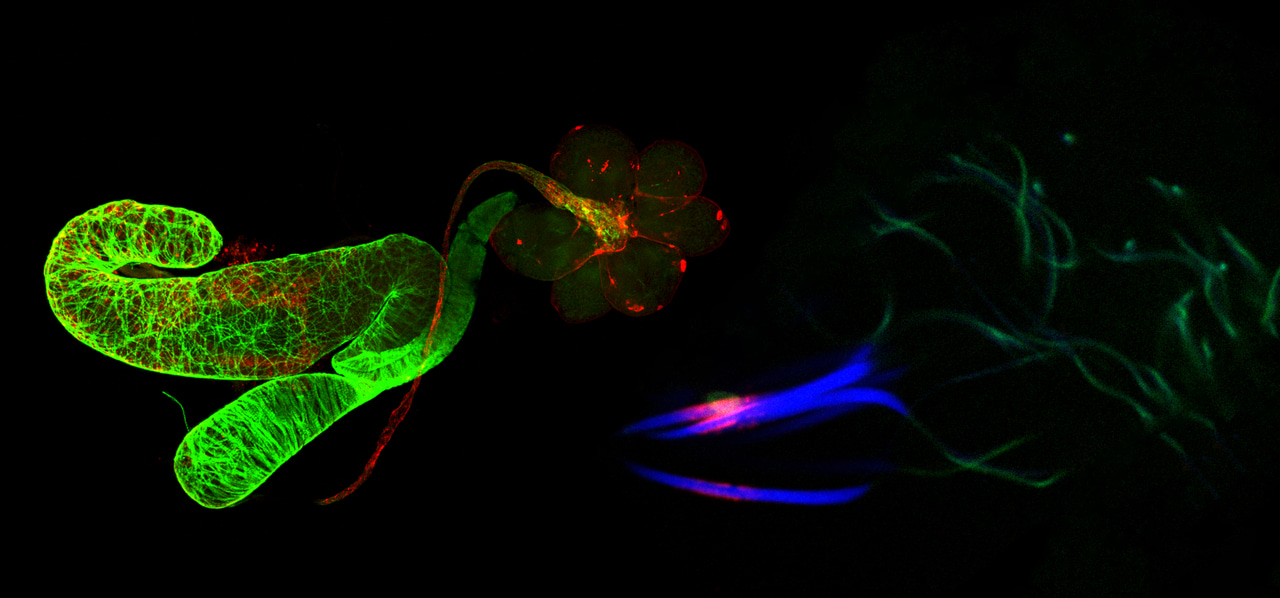Epidemic of rice gall dwarf disease in field caused by leafhopper sperm-mediated paternal transmission
Published in Microbiology

The virus disease caused by rice gall dwarf virus (RGDV) is always epidemic in the Southern China over the past 30 years1, so the persistence of virus during overwintering seasons unfavorable for viral horizontal transmission in the field is critical. We began to do the field investigation on this virus and its leafhopper vector Recilia dorsalis in 2012, and this survey has been conducted every 2 or 3 months each year up to now. The phenomenon of the lack of host plants for RGDV and the high viruliferous rate (~20%) of leafhoppers in the field during overwinter months (November to March) in Southern China attracted our attention. The survey results suggest a pivotal role of viral vertical transmission in vector R. dorsalis, a main RGDV reservoir in the field during overwintering seasons.
To search the vertical transmission route of RGDV in leafhoppers, we firs focused our attention on the transovarial transmission. The sequential infection of RGDV in the ovary was observed using immunofluorescence labeling, surprisingly, RGDV infection rate in ovary is very low (10%~20%), while the viruliferous rate of insect offspring is high (~80%)2. We were confused for a long time and realized that RGDV virions encounter strong barriers to enter the oocytes in female vectors for maternal transmission and there must exist another vertical transmission route, paternal transmission. To explore the hypothesis, we conducted the mating experiments within and between viruliferous and nonviruliferous leafhoppers and the results showed that the RGDV paternal transmission rate (73%) is approximately 3.3 times as efficient as maternal transmission (22%). This is amazing! We then want to know whether the paternal transmission of RGDV is mediated by the leafhopper sperm which has an extremely streamlined structure with the head consisting of condensed nucleus and the tails made of microtubule bundles and without spare cytoplasm. Both the immunofluorescence and electron microscopy revealed an association of dense RGDV particles with the plasma membrane of sperm heads in the viruliferous male reproductive system. Thus far, we got the storyline of this study.
Having that in mind, we continued to dissect the mechanism for paternal transmission of RGDV by hitchhiking with the sperm and found that the virus-sperm binding was mediated by the specific interaction of viral capsid protein and heparan sulfate proteoglycan on the surface of sperm heads.
This efficient paternal transmission of virus is previously unknown though the maternal transmission of viruses by insect vector is a ubiquitous phenomenon in nature. In addition, such high efficiency of paternal transmission scarcely affected the fitness of progeny eggs and male parent. Given the widespread occurrence of long-term epidemic for RGDV in nature, the paternal transmission of RGDV as a preferred mode of vertical transmission has gained an evolutionary advantage during the long-term virus-vector interactions and becomes an essential link in viral epidemic persistence.
Our report can be found at https://doi.org/10.1038/s41467-019-08860-4
This blog was written by Qianzhuo Mao, Ph.D.
[1] Wei, T. Li, Y. Rice reoviruses in insect vectors. Annu. Rev. Phytopathol. 54, 99-120 (2016).
[2] Liao, Z. et al. Virus-induced tubules: a vehicle for spread of virions into ovary oocyte cells of an insect vector. Front. Microbiol. 8, 475 (2017).
Follow the Topic
-
Nature Communications

An open access, multidisciplinary journal dedicated to publishing high-quality research in all areas of the biological, health, physical, chemical and Earth sciences.
Related Collections
With Collections, you can get published faster and increase your visibility.
Women's Health
Publishing Model: Hybrid
Deadline: Ongoing
Advances in neurodegenerative diseases
Publishing Model: Hybrid
Deadline: Dec 24, 2025
Please sign in or register for FREE
If you are a registered user on Research Communities by Springer Nature, please sign in